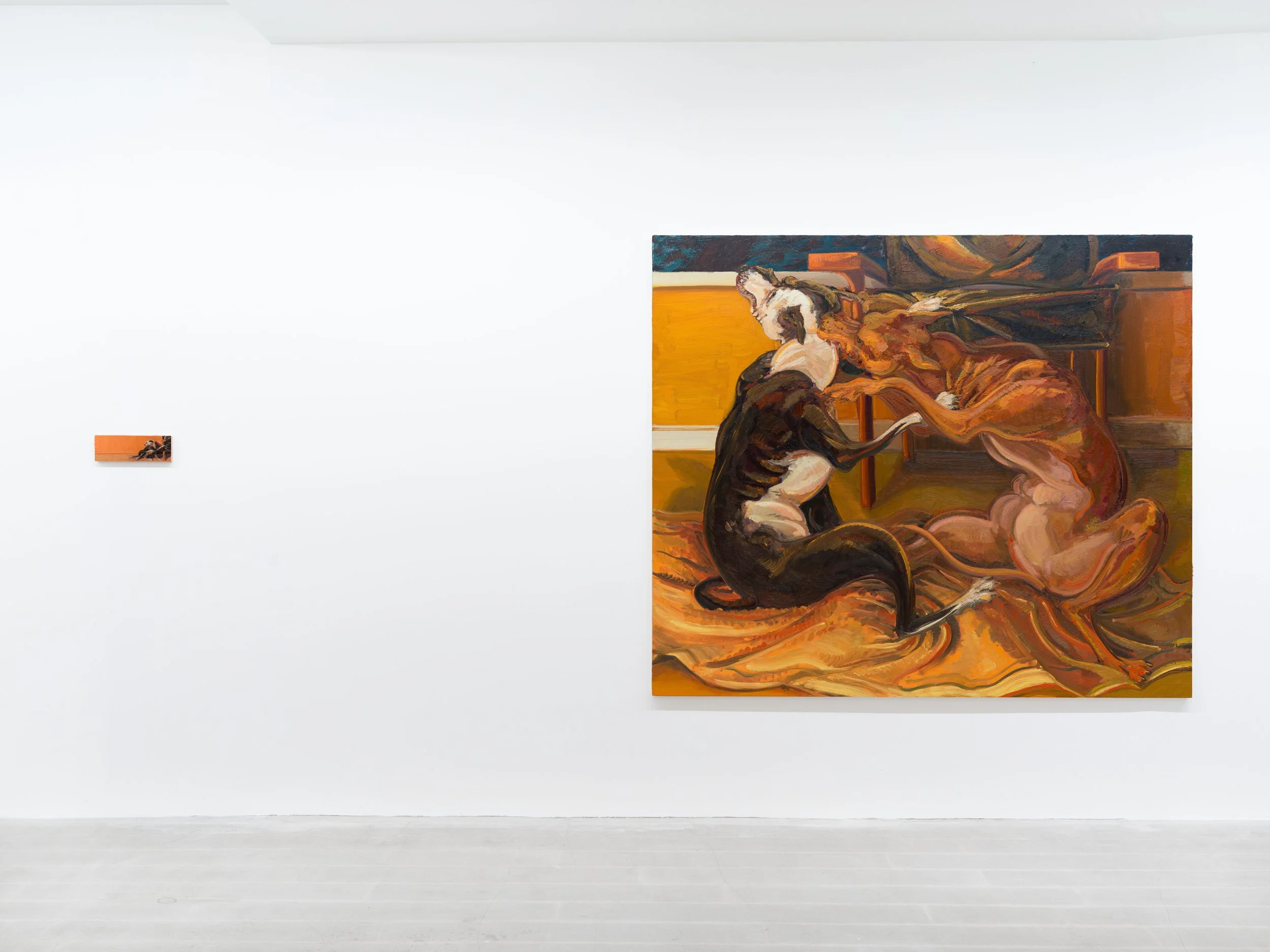Double Wall
Jack Barrett, 2023
“Memory is a choice. You said that once, with your back to me, the way a god would say it.”
- Ocean Vuong
In Timothy Lai’s exhibition Double Wall, things left unsaid reside in waiting. Silence crouches as an omnipresent figure living within the familial unit, unleashed sometimes as performative protection, and at other times, leashed as a placeholder against emotions that cannot or will not be articulated. Amid this verbal lack, Lai’s work materially bristles.
The works in Double Wall reflect their domestic setting, showing vignettes of encounters between family members. These encounters are pushed compositionally, almost theatrically, to the foreground, pulling the viewer to witness these skirmishes. The works in Double Wall teeter on the precipice between conflict and resolution. In Apologia, Apology, the figures reside in the margins, in a non-confrontational stasis of pause. The air vibrates with the “dot dot dot” of feelings inarticulable. This tension Lai builds up in heavy impasto; the architectural negative space becomes an actor within the dynamic.
If Lai’s previous body of work centered around the misrecognition between father and son, Double Wall reads the effect these patriarchal structures have on the parental figure, and how inevitably, they are the heirlooms that make up the next generation’s inheritance. In Coronation, a person stands atop a stool with their back to us, arms hanging limp at their side as a shadowy figure in the background configures the suit jacket around their body. The suit, a uniform to gain social currency, and a mantle of white-Western authority, trickles down patriarchal economics to bestow the role of family leader on a new individual. The sharp geometric lines of the suit trap the fleshiness of the central figure. The transference uncovers the mutable masculine roles of father and son. Inherent in this piece is a subtle formal nod to the Crucifixion; Lai deftly gestures towards how the embodiment of these patriarchal roles can be similarly sacrificial, trading individuality to conform to the family unit, to become martyr.
In the other works, silence also sires assimilation. Mirrors appear often. In the work, To Contain Less... or More? a figure, bound up in the suit jacket, is caught between a chinoiserie and a colonial eagle mirror. Lai explores the triangulation of these three elements as a space that reflects the nuanced ontology of existing as a person of color in the United States. The figure departs the composition, leaving suit behind, alluding to the difficulty of choosing to engage, assimilate with and perform into these predetermined frameworks.
The uncertain site between the binaries of stasis and movement, silence and conflict are a running theme throughout the show. Depictions of a window-framed outside world are too small to envision moving through. A hand held mirror resting on an armchair reflects a closed door. Double Wall makes this tension visible, and Lai offers us no clear resolution. We are forced to sit within the pauses, breath held and on the cusp of speech.






















